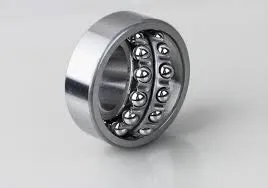
Dec . 03, 2024 16:53 Back to list
bearing 6209 dimensions
Understanding Bearing 6209 Dimensions and Its Applications
Bearings are critical components in machinery and equipment, enabling smooth and efficient rotational or linear movement. Among various types, the 6209 bearing stands out due to its reliability and versatility in numerous applications. This article delves into the specifications and dimensions of the 6209 bearing, exploring its significance in mechanical systems.
Overview of the 6209 Bearing
The 6209 bearing is a type of deep groove ball bearing, a widely utilized bearing configuration that facilitates low friction and high-speed rotation. Deep groove ball bearings are designed to accommodate both radial and axial loads in both directions, making them a popular choice for a variety of applications—from electric motors to household appliances.
Dimensions of the 6209 Bearing
The dimensions of the 6209 bearing are defined by the International Organization for Standardization (ISO). Here are the specific measurements
- Inner Diameter (ID) 45 mm - Outer Diameter (OD) 85 mm - Width (B) 19 mm
These dimensions indicate that the 6209 bearing is moderately sized, making it suitable for applications where space is limited but a degree of load-bearing capacity is required. The inner diameter of 45 mm allows this bearing to fit onto shafts of the same size. The outer diameter of 85 mm and a width of 19 mm provide a good balance between size and load capacity.
Material and Construction
bearing 6209 dimensions

6209 bearings are typically made from high-carbon steel or stainless steel, which ensures durability and resistance to wear. Some variants may use ceramic materials for enhanced performance in high-speed applications. The internal structure often contains steel balls that are evenly spaced to minimize friction and noise during operation. Additionally, many 6209 bearings come with seals or shields to protect against contaminants and retain lubrication, thereby increasing their lifespan.
Performance Characteristics
The performance of a 6209 bearing is largely influenced by its dimensions and design. Due to its deep groove design, it is capable of handling significant radial and axial loads while maintaining minimal friction, which translates to enhanced efficiency and lower energy consumption. The standard 6209 bearing typically operates at a maximum speed of around 5000 RPM, depending on the application and specific design features.
Thermal stability is another critical factor; most 6209 bearings are designed to operate effectively within a temperature range of -30°C to +120°C. This makes them suitable for diverse environments, from refrigeration systems to industrial machinery.
Applications of the 6209 Bearing
Given its versatile dimensions and robust performance characteristics, the 6209 bearing is utilized in a wide range of applications. Some common uses include
1. Electric Motors They are extensively used in electric motors due to their ability to handle both axial and radial loads. 2. Automotive Components In vehicles, 6209 bearings can be found in various parts such as gearboxes and differentials, where reliability and high performance are crucial. 3. Household Appliances Common in washing machines and fans, these bearings help reduce noise and increase efficiency. 4. Industrial Equipment They are also used in conveyor systems, pumps, and textile machinery, among others.
Conclusion
In summary, the 6209 bearing is a fundamental component across many industrial and household applications. Understanding its dimensions—inner diameter of 45 mm, outer diameter of 85 mm, and width of 19 mm—along with its performance capabilities, helps in selecting the right bearing for specific needs. Its sturdy construction and versatility make it an indispensable part of machinery that require efficient rotational movement. As industries continue to evolve, the demand for reliable bearings like the 6209 will remain paramount, solidifying its role in modern engineering.
Latest news
-
Premium Deep Groove Ball Bearings | High Speed & Reliability
NewsAug.29,2025
-
Durable Scaffolding Clamps - Secure & Reliable Tube Connectors
NewsAug.28,2025
-
Common Failures in Thrust Ball Bearings and Solutions
NewsAug.22,2025
-
How Tapered Roller Bearings Can Take Shock Loads
NewsAug.22,2025
-
Angular Bearings in High-Precision Spindles
NewsAug.22,2025
-
The Impact of Misalignment on Cylindrical Roller Bearing Performance
NewsAug.22,2025
